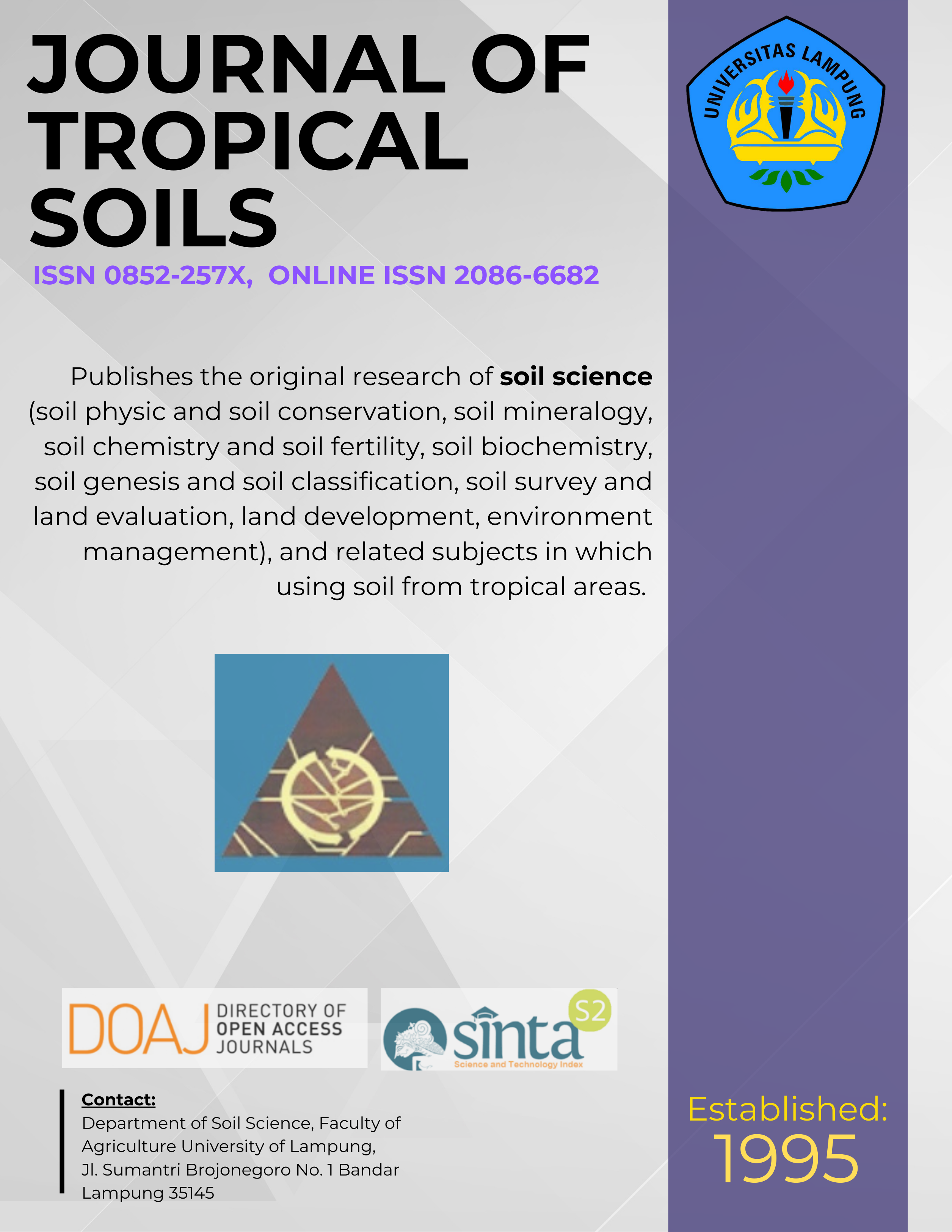The Effect of Paraquat, Difenoconazole, and Butylphenyl Methylcarbamate (BPMC) on CO2 Emissions and Phenolic Acids in Peat Soil
Main Article Content
Abstract
Pesticides are widely used in agriculture, including on peat soil. The objective of this study was to analyze the effect of the application of paraquat, difenoconazole, and butylphenyl methylcarbamate (BPMC) on CO2 emissions and concentrations of phenolic acids in a peat soil. Peat soil sample was taken in District of Pulang Pisau, Central Kalimantan. The peat soil was applied with 1.89 mg kg-1 paraquat, 1.72 mg kg-1 difenoconazole and 1.65 mg kg-1 butylphenyl methylcarbamate (BPMC), then the soil was incubated for 1, 2, 4 , 5, 7, 10, 14, 21, 26 and 30 days. The results showed that the application of pesticides on peat soil increased CO2emission, and decreased CH4 emission and phenolic acid concentrations up to 30 days of incubation. The CO2 emmisions were derived from C of degraded pesticides and from C of phenolic acids, although the oxidation reaction was not accompanied by the change of soil pH.
Keyword: CO2 emission, phenolic acids, butylphenyl methylcarbamate (BPMC), difenoconazole, paraquat, peat soil
Downloads
Article Details
License for Authors
Authors who publish with this journal agree to the following terms:
- Authors retain copyright and grant the journal right of first publication with the work simultaneously licensed under a Creative Commons Attribution License that allows others to share the work with an acknowledgement of the work's authorship and initial publication in this journal.
- Authors are able to enter into separate, additional contractual arrangements for the non-exclusive distribution of the journal's published version of the work (e.g., post it to an institutional repository or publish it in a book), with an acknowledgement of its initial publication in this journal.
- Authors are permitted and encouraged to post their work online (e.g., in institutional repositories or on their website) prior to and during the submission process, as it can lead to productive exchanges, as well as earlier and greater citation of published work (See The Effect of Open Access).
License for Regular Users
Other regular users who want to cite, distribute, remix, tweak, and build upon author’s works, even for commercial purposes, should acknowledge the work’s authorship and initial publication in this journal, licensed under a Creative Commons Attribution License.
